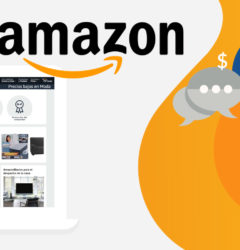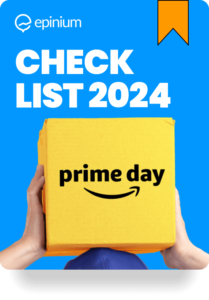Choosing a sales plan
Amazon offers two sales plans: the Individual Plan and the Professional Plan. Before thinking about how to create an Amazon Seller account, we should consider what these plans offer and which one best suits the type of seller we want to be.
Individual Plan
This is intended for someone who is new to online sales and plans to sell 40 items or fewer per month. Individual Plan sellers are typically not interested in or do not need access to advanced selling tools, as they may not yet be sure what they will sell. The Individual Plan costs €0.99 per unit sold. The Individual Plan does not give us access to the inventory management features of the Professional Plan, but with fewer than 40 items per month, these features may not be necessary until we start scaling our business.
Professional Plan
The Professional Plan is for larger, more experienced sellers who plan to sell more than 40 items per month and know what they will sell. This seller has or wants the fully developed Amazon Marketplace Web Service (MWS) and sales reports. The Professional Plan has a fixed monthly fee of €39. It allows us to use inventory management and order management tools. It also gives us access to the Amazon MWS to upload, receive reports, and use the API functions. With the Professional Plan, we can also take advantage of Amazon promotions, gift services, and other special listing functions. Finally, only professionals can have sales tax automatically collected.
Determining a business model
There are thousands of products to sell on Amazon, which means there are different business models that work better for some products compared to others. That said, we need to understand the products we want to sell and the business model that works best. Amazon offers several business models, including:
- Retail arbitrage: With retail arbitrage, we buy low and sell high. Through retail arbitrage, we make profits by the profit margin and typically require buying discounted items at outlets or malls and selling them for more.
- Online arbitrage: Like retail arbitrage, online arbitrage is carried out completely online rather than pursuing malls for bargains.
- Wholesale: With the wholesale business model, we buy products wholesale directly from the manufacturer and maintain our inventory. This is much more expensive than any of the arbitrage models.
- Private label: The private label business model requires us to buy unmarked products from a manufacturer and label them as our own. Again, this requires maintaining a fairly significant inventory and perhaps more sales skills and knowledge than average.
- Dropshipping: Through dropshipping, we sell products that we do not hold in inventory. When an order is placed, we forward it to a supplier who ships it directly to the customer. This requires less capital to start, as we do not need to purchase inventory upfront, but it also means we have less control over the quality of the product and the speed of delivery.
- Handmade: The Handmade business model allows us to sell the products we make. This requires marketing skills and the skill to make the product sellable. It is the least popular of the Amazon business models.
Choosing a FulFillment method
Amazon offers three basic methods of fulfillment, which is the process of shipping sold items to customers. The first is Fulfillment By Amazon (FBA), which is suitable for sellers with no room for inventory. In addition, Amazon FBA shipping makes our products automatically eligible for Prime shipping. Let’s keep in mind that our packages will not have our name on them, cannot be customized with our branding, and Amazon may charge expensive fees for holding inventory.
The next method of fulfillment is Fulfilled By Merchant (FBM). This method is for sellers who can manage the fulfillment process, want to customize the packaging, and have room for inventory. It may be cheaper, but managing order logistics can be time consuming.
Finally, Seller Fulfilled Prime uses a third-party fulfillment partner (3PF). This uses a third party shipper, but still allows us to customize and use Prime shipping.
Choosing products to sell on our seller account on Amazon.
Amazon and other third parties provide software that helps us find a product to sell or validate the product we want to sell. There are different product research tools that can help us find items to sell. Fashion, books, home, garden and video games are great categories to sell products. Also, when choosing products to sell, it is important to keep in mind tips for pricing Amazon products, such as performing a competitor analysis.
Creating an Amazon seller account
Now that we have chosen the business plan, business model, distribution method and products, it is time to create our account. Before we start, we make sure our country is eligible; not all are.
- Company email address or Amazon customer account
- Credit card with international charge
- A government-issued ID (proof of your ID protects sellers and buyers)
- Tax information, which is usually a signed W-9 form
- A telephone number
- A bank account where Amazon can send sales proceeds to
Once we have all this together, we can proceed to open the seller account with Amazon
Save time in this process with our platform where Amazon sellers can save 60% of time optimizing product detail pages, be 50% more effective following Amazon’s Style Guidelines and increase their sales by 30%. Get a free audit and start optimizing your listings now! Take advantage of it.






